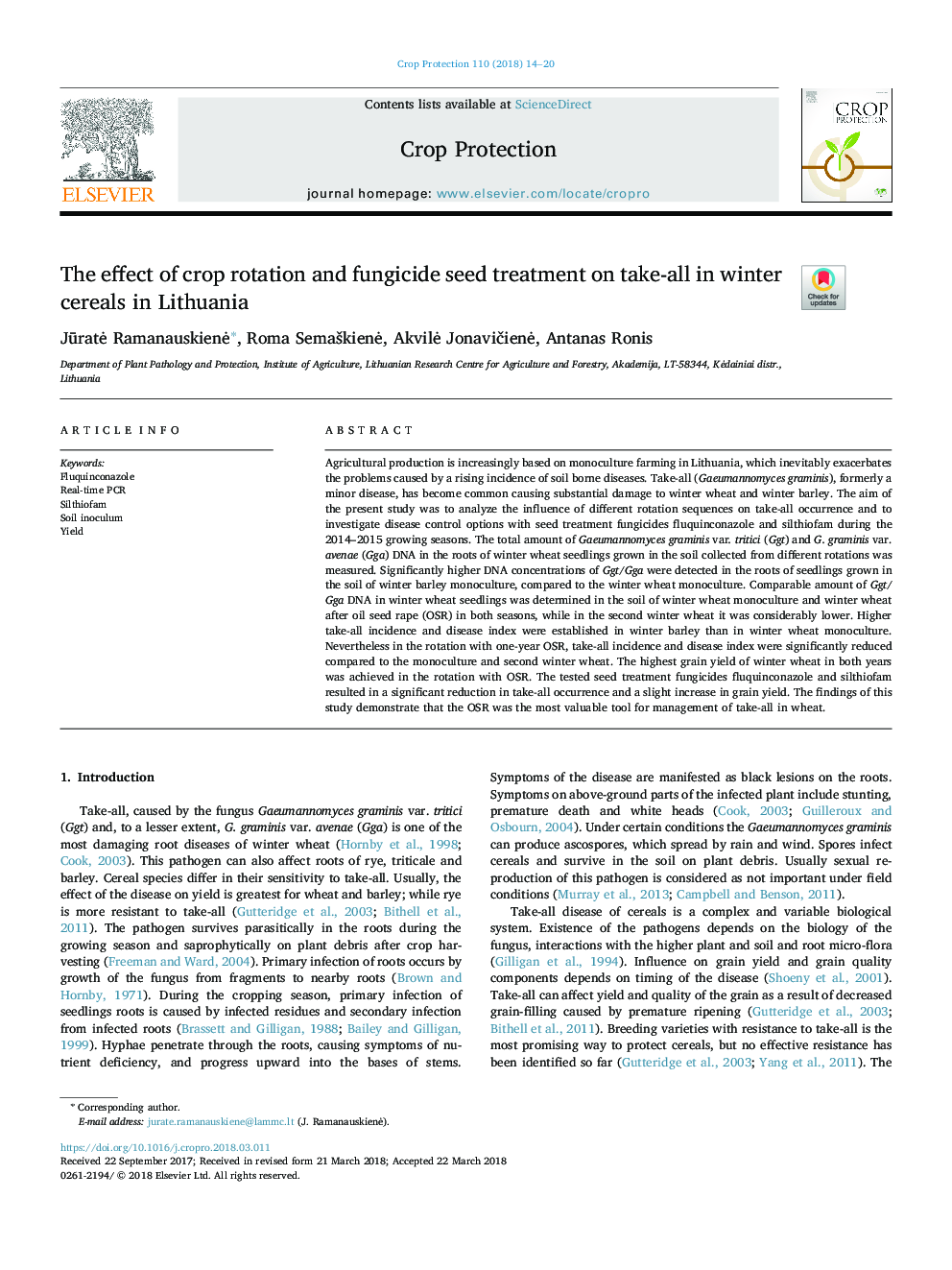| کد مقاله | کد نشریه | سال انتشار | مقاله انگلیسی | نسخه تمام متن |
|---|---|---|---|---|
| 8878018 | 1624277 | 2018 | 7 صفحه PDF | دانلود رایگان |
عنوان انگلیسی مقاله ISI
The effect of crop rotation and fungicide seed treatment on take-all in winter cereals in Lithuania
ترجمه فارسی عنوان
اثر متقابل چرخش و درمان دانه های قارچ کش بر کل دانه های زمستانی در
دانلود مقاله + سفارش ترجمه
دانلود مقاله ISI انگلیسی
رایگان برای ایرانیان
کلمات کلیدی
موضوعات مرتبط
علوم زیستی و بیوفناوری
علوم کشاورزی و بیولوژیک
علوم زراعت و اصلاح نباتات
چکیده انگلیسی
Agricultural production is increasingly based on monoculture farming in Lithuania, which inevitably exacerbates the problems caused by a rising incidence of soil borne diseases. Take-all (Gaeumannomyces graminis), formerly a minor disease, has become common causing substantial damage to winter wheat and winter barley. The aim of the present study was to analyze the influence of different rotation sequences on take-all occurrence and to investigate disease control options with seed treatment fungicides fluquinconazole and silthiofam during the 2014-2015 growing seasons. The total amount of Gaeumannomyces graminis var. tritici (Ggt) and G. graminis var. avenae (Gga) DNA in the roots of winter wheat seedlings grown in the soil collected from different rotations was measured. Significantly higher DNA concentrations of Ggt/Gga were detected in the roots of seedlings grown in the soil of winter barley monoculture, compared to the winter wheat monoculture. Comparable amount of Ggt/Gga DNA in winter wheat seedlings was determined in the soil of winter wheat monoculture and winter wheat after oil seed rape (OSR) in both seasons, while in the second winter wheat it was considerably lower. Higher take-all incidence and disease index were established in winter barley than in winter wheat monoculture. Nevertheless in the rotation with one-year OSR, take-all incidence and disease index were significantly reduced compared to the monoculture and second winter wheat. The highest grain yield of winter wheat in both years was achieved in the rotation with OSR. The tested seed treatment fungicides fluquinconazole and silthiofam resulted in a significant reduction in take-all occurrence and a slight increase in grain yield. The findings of this study demonstrate that the OSR was the most valuable tool for management of take-all in wheat.
ناشر
Database: Elsevier - ScienceDirect (ساینس دایرکت)
Journal: Crop Protection - Volume 110, August 2018, Pages 14-20
Journal: Crop Protection - Volume 110, August 2018, Pages 14-20
نویسندگان
JÅ«ratÄ RamanauskienÄ, Roma SemaÅ¡kienÄ, AkvilÄ JonaviÄienÄ, Antanas Ronis,
